How exactly does a one-ton Liberty Bell replica disappear?
Since I launched this site, folks have reached out to me with stories about various Liberty Bell replicas. I’ve heard from other bell hunters, private bell owners and folks trying to solve their own Liberty Bell mysteries. Last year someone sent me a link to a Washington Post article detailing the unbelievable story of how a one-ton monument simply vanished in the nation’s capital.
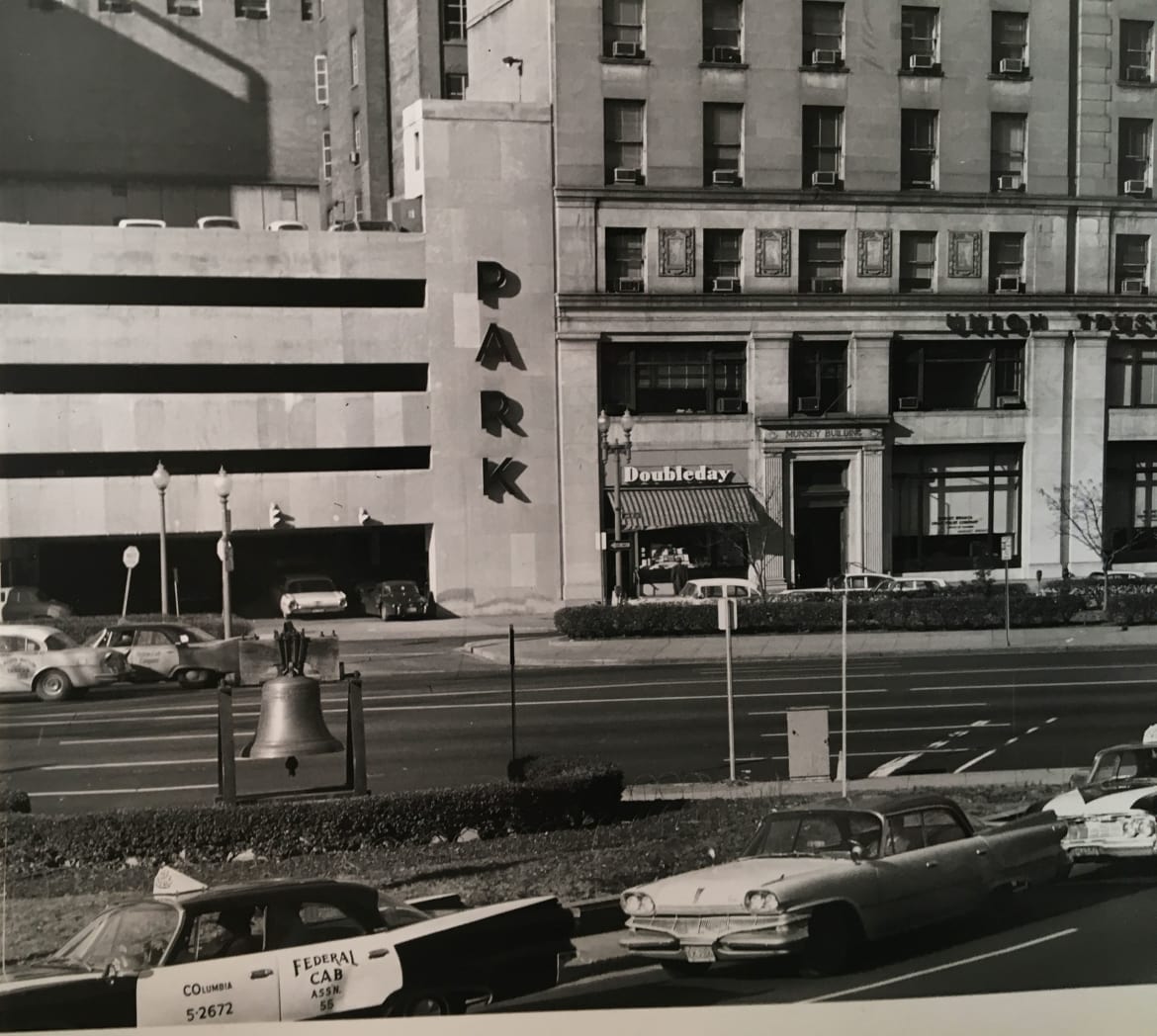
The missing Liberty Bell was one of a series* of replicas commissioned by the U.S. Treasury and cast in France by the Paccard Bell Foundry. These numbered replicas — one for each state and territory, including the District of Columbia — would tour their respective regions to promote a U.S. Savings Bond drive in the summer of 1950. At the conclusion of the drive, the bells were presented as gifts from the Treasury to their respective regions.
I dove in and found half a dozen variations of the same story everywhere from local TV news to the Daily Beast. The impetus for all stories was a press release timed for publication on the fourth of July, 2017, from DC Council Director of Communications Josh Gibson.
No stranger to Scooby-Doo-type history mysteries, Gibson had previously cracked the case of a mysterious plaque found in a broom closet of the District’s Wilson Building.
As implausible as it sounds, it’s not the first time a 2080-pound Liberty Bell has gone missing.
Phil Tovrea’s 1950 Liberty Bell replica disappeared in plain sight in the country’s fifth-largest city. It would rise triumphantly from overgrown brush when a new property owner redeveloped the land in 2004.
In 1976, as a renewed patriotic spirit was sweeping the nation, the Liberty Bell replicas were called back into service to peal out in celebration of the Bicentennial.
A number of states had to scramble to pull their bells out of storage and make necessary repairs. Illinois found themselves in a bit of a pickle — they had lost their Liberty Bell. Some old-fashioned gumshoe work led to the discovery of the bell at a firehouse on the fairgrounds north of Springfield.
Gibson explained the missing bell was one of three replicas he knew to be located in DC. He clarified it is not the gihugeic American Legion Freedom Bell at Union Station, nor is it the replica located on the grounds of the Treasury Building, directly across from the White House.
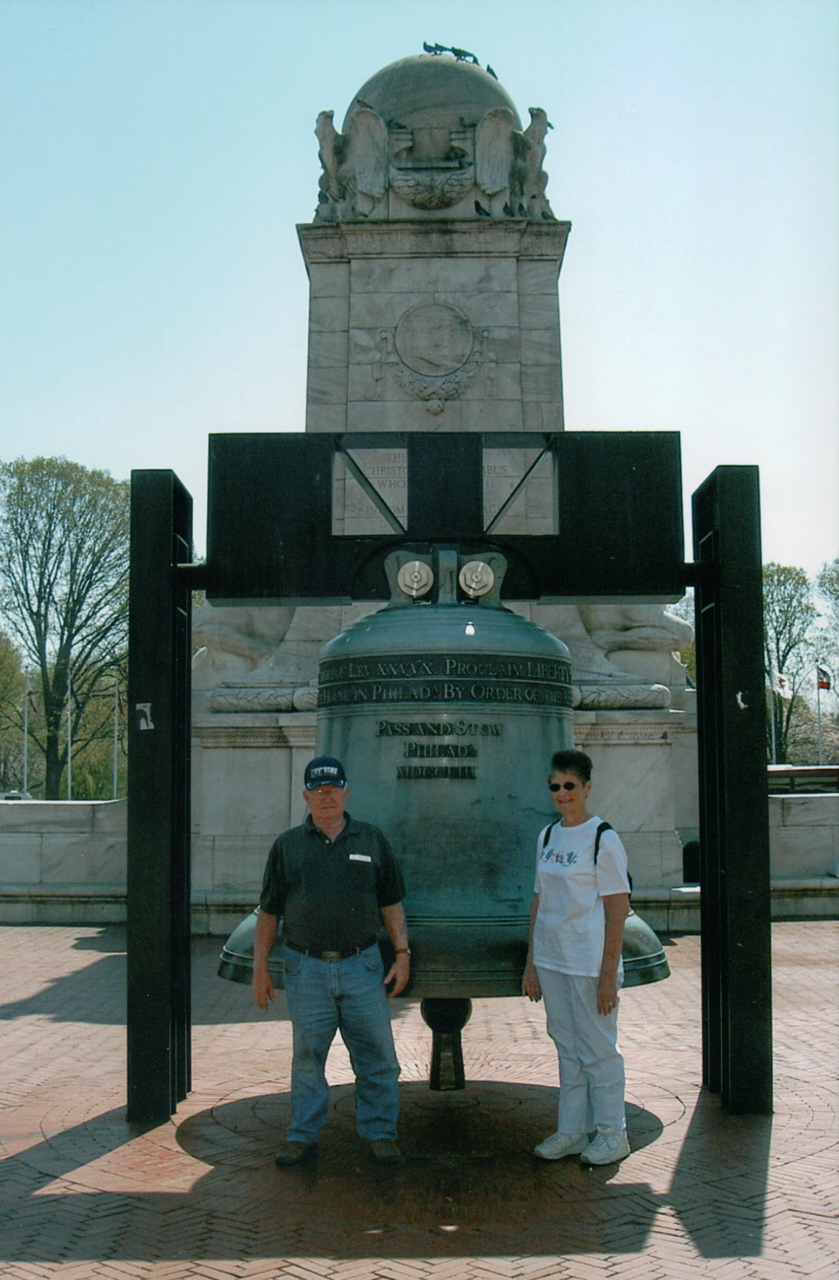
Compiled from various sources, here is the missing bell’s provenance:
July 20th, 1950: The bell is presented to the city by Secretary of the Treasury John W. Snyder with the stipulation that it be displayed in a public, non-commercial setting. The city had not yet found a permanent location, so the bell was displayed atop of the steps of the District Building, now called the Wilson Building, at 1350 Pennsylvania Avenue.
July 25th, 1950: After a number of people ring it out of curiosity, District Building guards tie the bellrope around the clapper, silencing the Liberty Bell. This prompts the Washington Post’s poet laureate to pen an ode calling for the bell’s liberation. It reads in part:
Untie that clapper. Set it free.
And let it ring for Liberty.
The bell is seen more as clutter than a monument. Last cleaned in 1908, the front of the building had become an embarrassing eyesore. People didn’t like having to walk around the bell just to enter the building. In early 1955 the bell is moved down the steps to the front of the building.
1955: The bell takes another short trip to a small park in front of the District Building and is placed on a concrete base. The bell becomes a landmark meet-up spot for District residents.
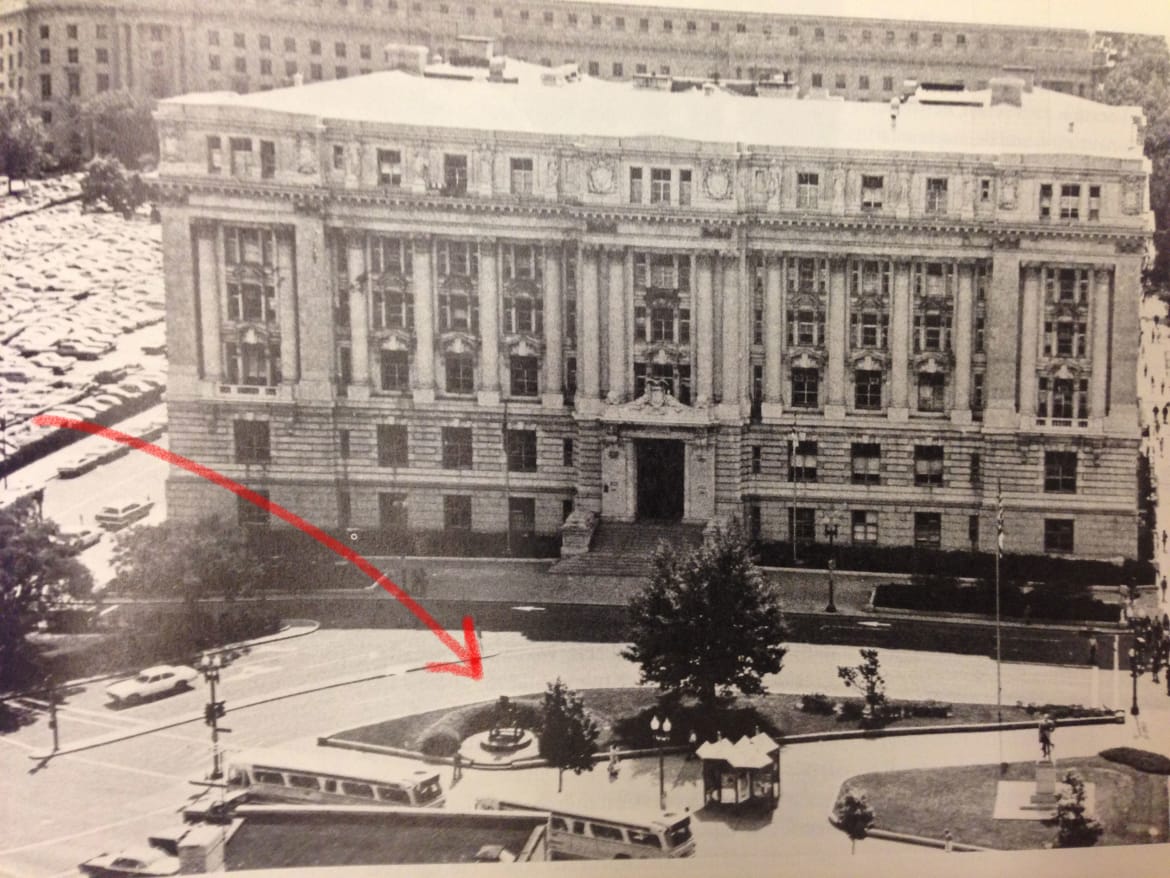
January 21, 1961: As John F. Kennedy’s inaugural parade motors down Pennsylvania Avenue, he calls the place a dump. The president-elect remarks that the area doesn’t look the “the main street of the main city of the main country”. As a response, the PADC, a decades-long renovation plan is hatched.
May 1, 1961: The bell tolls again to celebrate the 20th anniversary of U.S. Savings Bonds. Comedy duo Rowan and Martin do the honors.
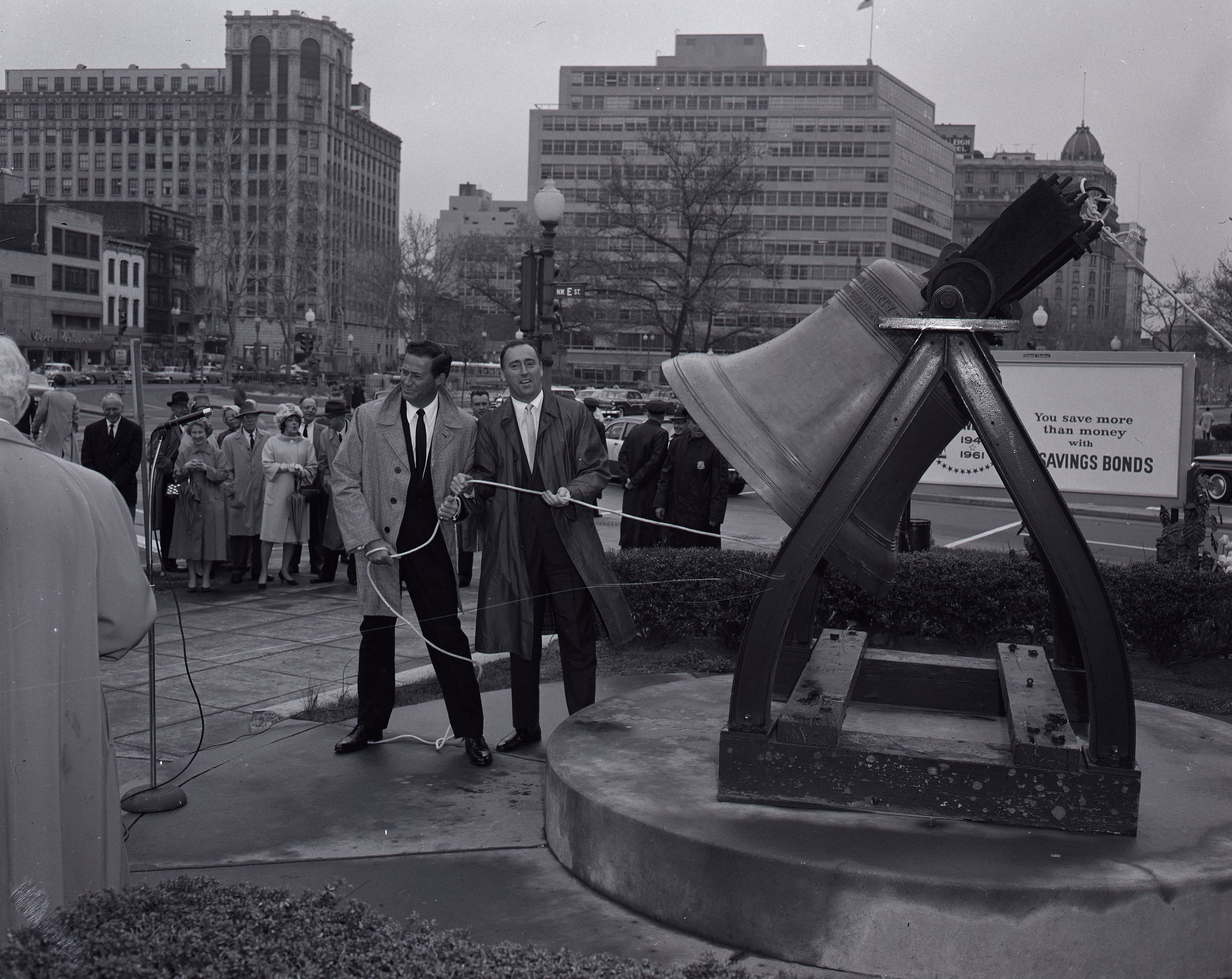
April 2, 1979: The bell is last recorded in this location as part of a Washington Star article on renovations in the area.
July 30, 1981: The bell is declared missing.
As the area was being renovated — the bell, along with a statue of Alexander “Boss” Shepherd — was temporarily removed. It was believed both were being held at a wastewater treatment plant. But while the Boss was photographed lying in the weeds, plant workers could not recall ever seeing the bell. Shepherd made it back to the city, returning to his original location in 2005 — but the Liberty Bell was never to be seen again.
Gibson called on the public to send in any photos, memories or clues they had.
The hottest tip Gibson got was about a Liberty Bell replica spotted in the Fort Lincoln Cemetery. It turned out to be a genuine Paccard bell but cast in 1976. The 1976 replicas can be distinguished from the 1950 bells by their ornamental surface crack and lack of serial number.
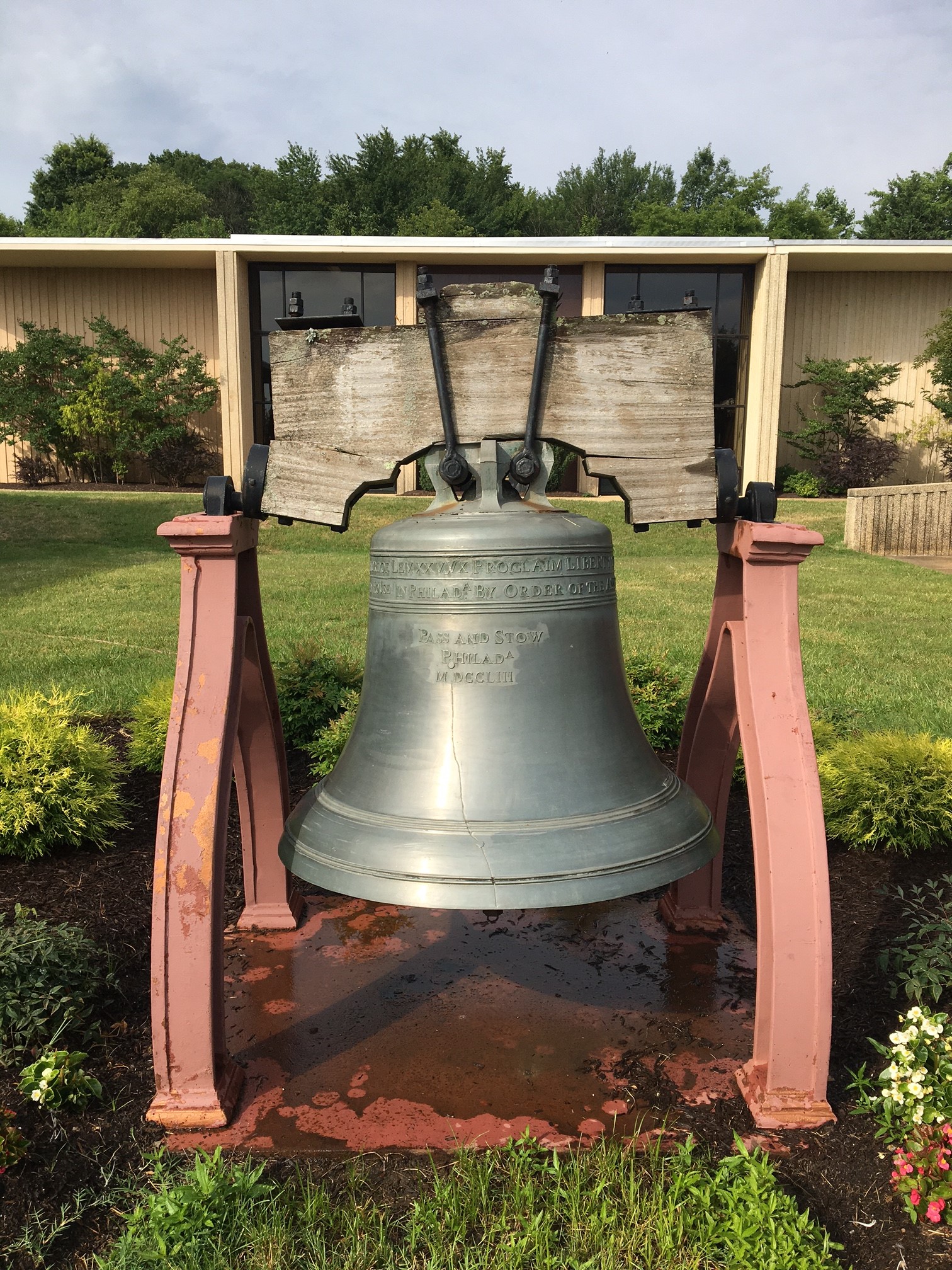
If the bell is ever to be found, Gibson feels strongly it will be through an interview with someone who knows something, not by combing through musty archives — both of which he’s been doing since July of 2017.
“I’ve tracked down virtually all the personnel on both sides, and sadly, no one has provided that magic clue.” Gibson laments.
Garnering clues from interviews is no small task either. Gibson continues, “Many people have died, and 40-year memories aren’t that trustworthy.”
This case gets more complex the deeper you dive, but before we go there, let’s run some numbers.
*So, how many bells are there exactly?
The exact number of Liberty Bell replicas is cause for much confusion and debate. Until now, I thought there were 55. That’s the number I got from the fine folks at the Liberty Bell Museum in Allentown, PA. They have some dedicated folks who really know their history, along with replica #4, which I had the pleasure of ringing.
However, after digging in on this article, I’m fairly certain that 57 replicas were cast in the original 1950 edition.
Contemporary articles and reports on the replicas put the number anywhere from 49 to 55. The bells themselves don’t help the matter much, as even the accompanying plaques list different totals.
The first 49
In 1950, the Treasury sought a foundry to cast full-size, functional Liberty Bell replicas that would tour each state and the District of Columbia as promotional tools to help sell $650 million worth of savings bonds. Bell total: 49.
The Territories
Following an inside tip that Alaska and Hawaii might soon join the union, the Treasury upped the order to 53 to include the territories of Hawaii, Alaska, Puerto Rico and The U.S. Virgin Islands.
There seems to be no logic as to how the numbered bells were distributed among the American regions. Alaska has replica #1, so it’s fairly clear that at least these additional four were part of the original run. Bell total: 53.
Thank you. No, thank you.
There was only one foundry in the world that could complete such a large order in such a short amount of time; the storied Paccard Bell Foundry in Annecy-le-Vieux, a small town in the French Alps.
As a thank you for their hustle, the Secretary of the Treasury gifted a replica to the city of Annecy-le-Vieux on Sept. 4th, 1950.
In return, the city of Annecy-le-Vieux presented a Liberty Bell replica to President Truman’s hometown of Independence, MO, in October of 1950. Foundry owner Alfred Paccard was on hand to personally present the bell.
Since they were not used as part of the bond drive, the two gift bells were understandably not mentioned in the Secretary of the Treasury’s June 30th, 1950 fiscal year–end report.
The Annecy-le-Vieux bell is listed as #51, and the Independence bell is confirmed as #54 — so if those serial numbers are correct, it seems these bells were also part of the original production run. Bell total: 55.
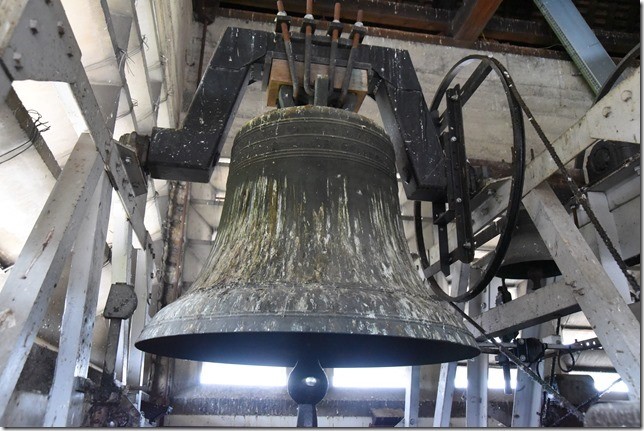
But wait, there’s more
If there are 55 bells, as I thought for the last ten years, then all 55 are accounted for. The Kansas bell is in storage but not missing. The other 54 locations have replicas on display. This accounting does not consider the two DC bells. When the missing DC bell is considered, the number bumps up to 56.
And then there’s Japan. I knew there was a replica in Tokyo, but I always assumed it was a later replica. Neither press accounts nor Treasury records make any mention of a bell in Japan. Gibson told me the Annecy-le-Vieux plaque mentions a replica in Japan. Some exploration confirms the Tokyo Liberty Bell replica is indeed part of the 1950 edition. It bears serial number #36, previously thought to be Kentucky. Bell total: 57.
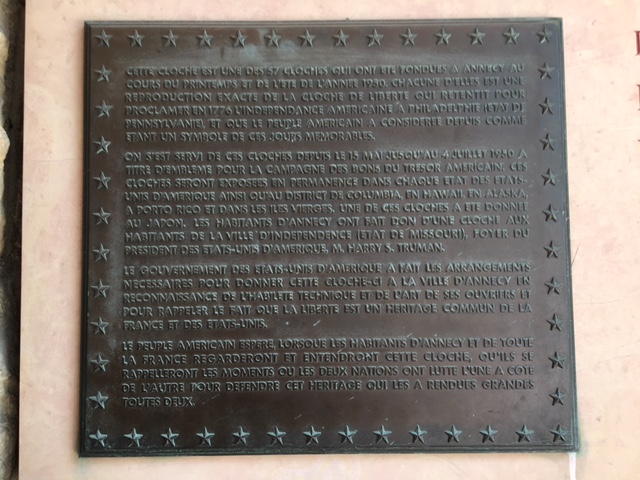
But wait, there’s even more
Not long into my quest to visit all of the 1950 bells, I started hearing about other replicas: two in Tennessee, two in Massachusetts, four in California, one in the black hills of South Dakota — bells as far away as the Czech Republic, Normandy and one in Russia that was reportedly melted down for scrap.
As Gibson quickly discovered, there are many more bells than the original 55. In fact, if you have the money and the space, you can still buy your very own Liberty Bell replica.
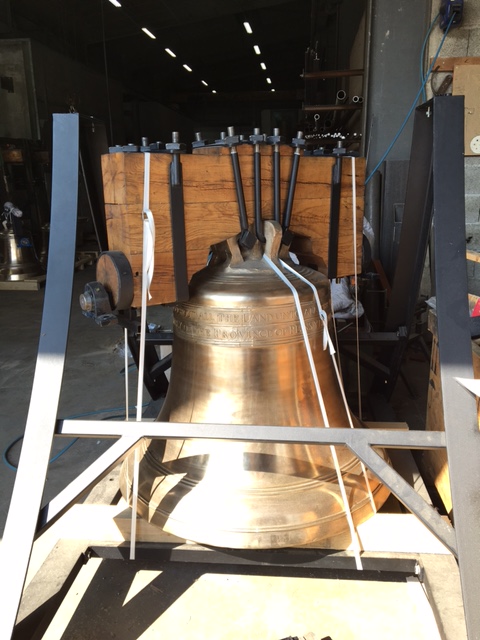
While a Liberty Bell is Liberty Bell is a Liberty Bell, the original 57 take precedence for most bell hunters.
Historically, the two main producers of full-size, functional Liberty Bell replicas are Paccard in France and the recently shuttered Whitechapel Bell Foundry in London, where the real-deal Liberty Bell was first cast.
It seems neither company kept good records of the number of bells they produced. So, while we know Paccard alone has cast over 300 replicas since 1950, the total number of existing Liberty Bell replicas is a mystery that will never be solved.
Any way you slice it, strange things are afoot at the nation’s capital.
Why two DC bells?
Washington’s missing Liberty Bell raises some compelling questions beyond where it might have gone:
When I first dove into this story, I thought there were 55 replicas, and so I was pretty convinced the missing bell and the Treasury bell were one and the same. It was hard to comprehend how the District of Columbia — the smallest geographical region to get a bell — actually got two.
I rabbit-holed pretty deeply, hatching some Nick Cage-ean conspiracy theories. Fortunately, before I could declare my intention to steal the Liberty Bell, Gibson shared his research with me. He provided several articles from different years and various sources describing each bell’s dedication ceremony and placing each in its respective location at the same time. Mystery Solved.
Embed from Getty Images
President George W. Bush and Secretary of Treasury Paul O’Neill in Match 2001
Is there a definitive record of the 1950 Liberty Bell replicas?
I haven’t found one yet. Reports are consistently inconsistent. In my research, I find that when something is reported incorrectly, it’s often done so multiple times. Whether it’s a minor difference in the weight of the bells or something more significant, like where the original Liberty Bell was cast — certain information often gets reported and repeated incorrectly.
My Liberty Bell replica list was originally based on one I found on the Liberty Bell Museum’s website about ten years ago. It’s no longer on their site, but I picked up a hard copy when I visited in 2016. I cross-referenced the locations with Robert English’s comprehensive photographic record and built my list with an accompanying Google map. I’ve personally visited 26 of them so far and continue my quest to see them all.
If the list from Paccard’s U.S.-based sales office was created referencing either my list or the museum’s list rather than their own records, that would explain how all three lists could be wrong in the same way.
Curiously, Paccard’s Liberty Bell replica location page lists the same bells in the same locations as the museum’s list but excludes the Annecy bell and serial numbers. Initially, I chalked that up to downplaying the French connection by only listing the U.S. bells. It’s just as likely they created the list with American tourists in mind and omitted the foreign bells and missing DC bell.
Embed from Getty Images
Michel Camdessus, IMF managing director with the Treasury bell, 1995
As the Treasury order has been reported anywhere from 49 to 55, it’s plausible that some extra bells were ordered but never officially counted.
What’s the serial number of the missing bell?
Neither Gibson nor any of the officials he spoke with could answer that question.
Gibson sent me a photo of the Treasury bell showing serial #55. However, the Liberty Bell Museum’s list (and mine, until I corrected it), lists the Washington DC bell as #28.
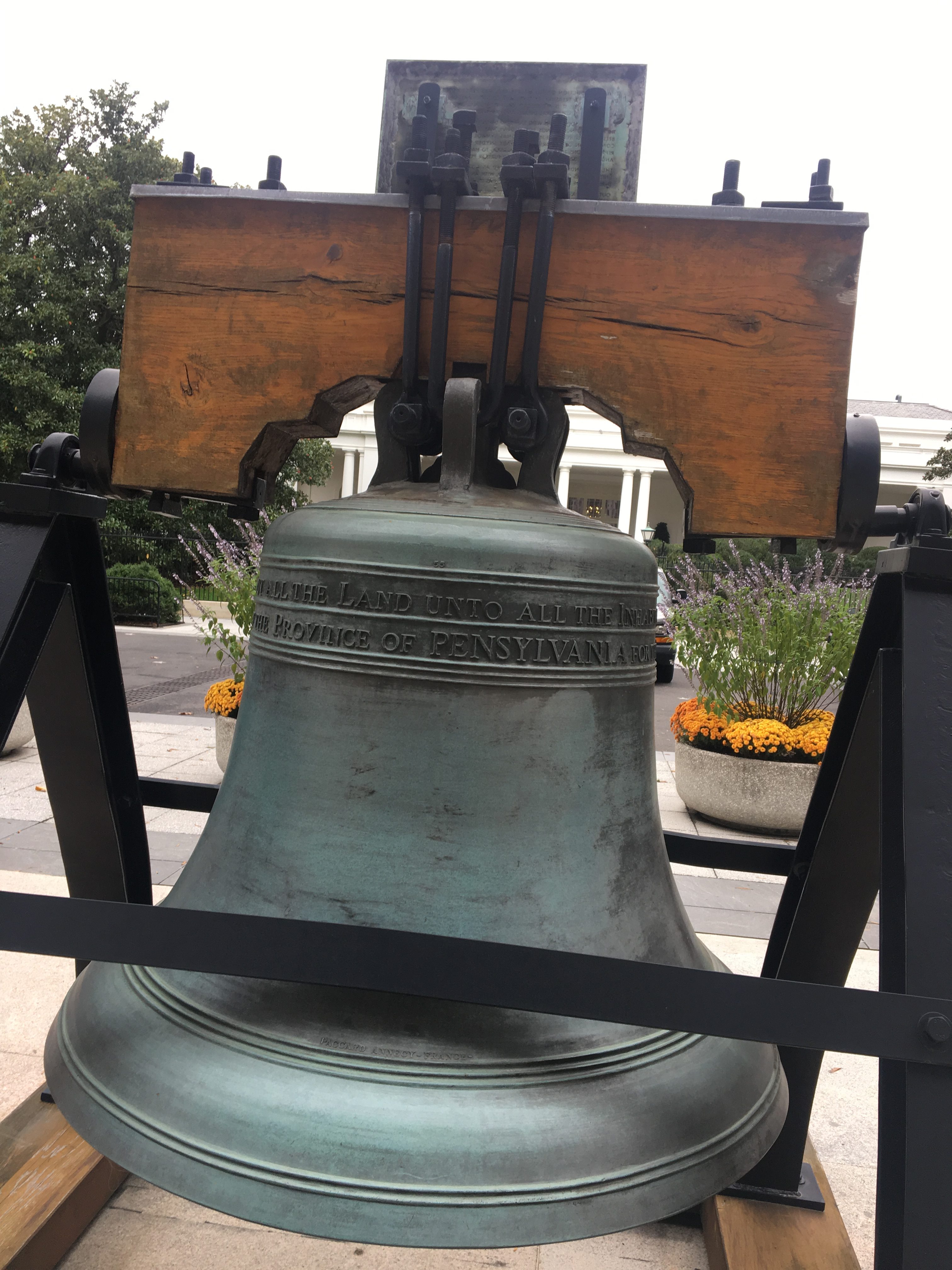
This certainly deepens the mystery. As I dug in, I learned the Liberty Bell Museum’s list is not entirely accurate. I discovered several serial numbers that were not listed accurately and a few bells — like those in Texas and California — that seem to have no visible serial number.
At this point, the serial number of the missing bell can only be posited through process of elimination. I only recently started locating and photographing the replicas’ serial numbers, so there are just a few I can verify. I’m reaching out to state historians and fellow bell hunters in an effort to confirm or revise the serial numbers as listed, and I’ll keep this site up to date.
This effort should at least narrow down the possibilities as to what the missing bell’s serial number might be.

Why did the District of Columbia, the smallest geographical region to get a bell, actually get two?
Gibson does not think there is any great mystery behind why DC got two bells. He thinks the Treasury just ordered themselves an extra — and I’m now inclined to agree with him. But to folks not familiar with how DC works, it can still seem strange. There are several possible explanations:
A prototype: Certainly, the Treasury would want to see a prototype before placing their full order. Even though they were not spending their own money, a prototype would be fiscally sound and reduce risk.
The challenge here is time. With only a few months between the request for proposal and delivery date, there simply was no time to cast a prototype, ship it across the Atlantic and wait for approval before starting production.
An extra: This seems like the most logical explanation. The original Liberty Bell serves as a reminder of just how fragile bells can be. Ordering some extras would have been a good insurance policy against damage, loss or theft.
Considering the bells were paid for by six American copper companies and the mounts furnished by American Steel, there would be no downside to ordering a few extras.
If the Treasury was left with an extra bell they didn’t need, I can see how they’d decide to keep it for themselves.
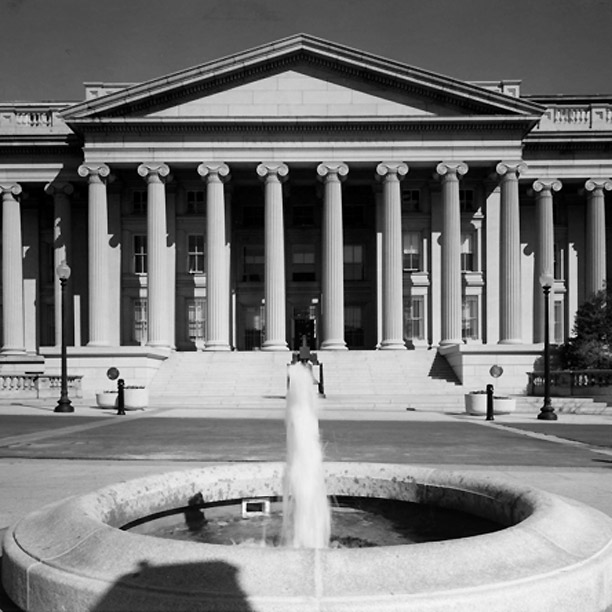
A gift from the Treasury to the Treasury: The Daily Beast article references the fact that the Treasury “graciously gifted themselves” one of the 1950 replicas.
While it’s intriguing to imagine government fat cats treating themselves, on our dime, to a bell worth $2,000 ($20,000 in today’s money) — that kind of pork rings contrary to all contemporary accounts of the 1950 bond drive.
If you’re a fan of reduced government spending and public/private partnerships, there is no better case study than the 1950 Savings Bond drive.
The Treasury’s own 1950 fiscal year-end report details the extent to which they reduced expenses — garnering donations of fuel, advertising and even printing. There is no indication, in this report at least, that the bond drive cost the Treasury a dime.
It’s much more plausible to me that there was an extra bell, and the Treasury kept it.
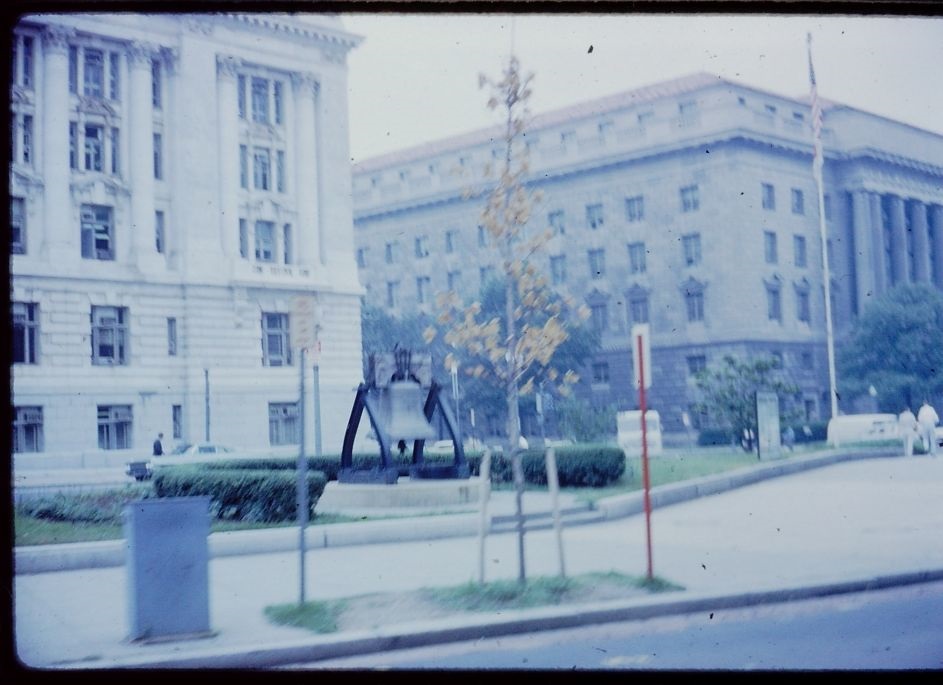
Federal / local discord: Outsiders like me think of the nation’s capital as one place — it’s got the White House, Capitol, monuments and government buildings. Also, people live there.
But Washington is like no other American city — and that difference is rooted in the Constitution.
In 1783 a mob of Revolutionary soldiers, angry about not being paid, stormed the Capitol in Philadelphia. This forced Congress to briefly regroup in exile in New Jersey. As a result, the founding fathers identified the need for a capital city under the control and protection of Congress.
As detailed by James Madison in Federalist Paper #43, Congress felt so strongly about the issue they worked it into the Constitution. Article I, Section 8, Clause 17 stipulates Congress shall have the power: “To exercise exclusive Legislation in all Cases whatsoever, over such District (not exceeding ten Miles square) as may, by Cession of Particular States, and the Acceptance of Congress, become the Seat of the Government of the United States …”
Virginia and Maryland both ceded land and a Capital city, under the control of Congress, was established.
From 1790 to today, District residents have sought more control over their own governance and congressional representation. Washingtonians finally gained the right to vote for president in 1964 and have been able to elect their own mayor only since 1975. Washington — a city the size of Paris with a population bigger than Wyoming or Vermont — pays taxes like the rest of us. But with no voting representation in Congress, DC residents have no say in declaring the wars they fight and die in, or in levying the taxes they pay. The slogan “Taxation without representation” has adorned District license plates since 2000.
There are dozens of separate police departments with jurisdiction over different parts of the city. There is even a website to help protesters identify the various police forces and their respective powers.
In this light, one can totally chalk up the bell’s disappearance to the historic discord between local and federal governance.
Gibson supports this thinking. “The PADC, the (mostly) federal organization that last handled the bell, claims the local DC government lost it, and vice versa.”
Discord between local and federal organizations can not only explain how the bell went missing but also why Washington got two in the first place.
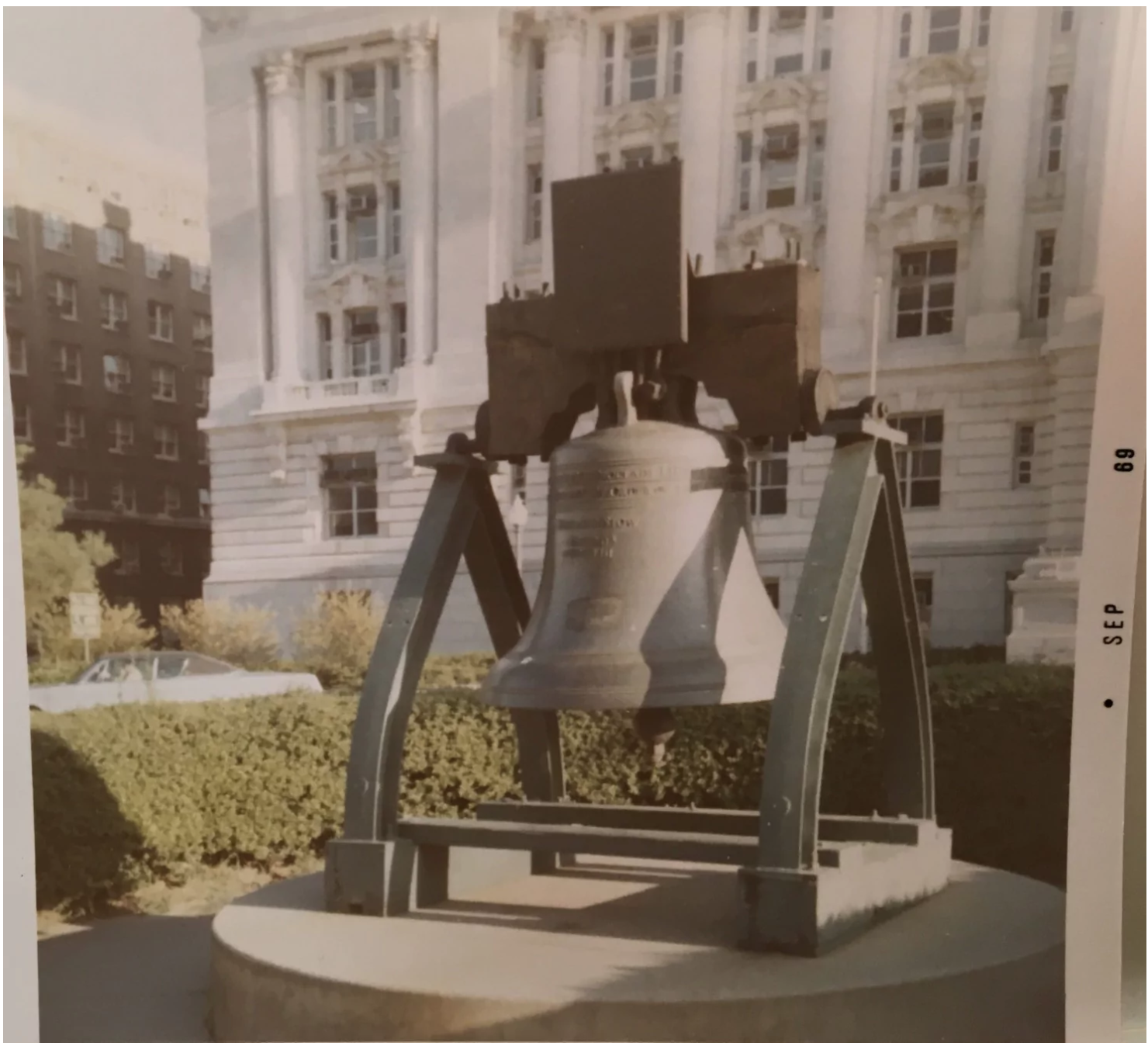
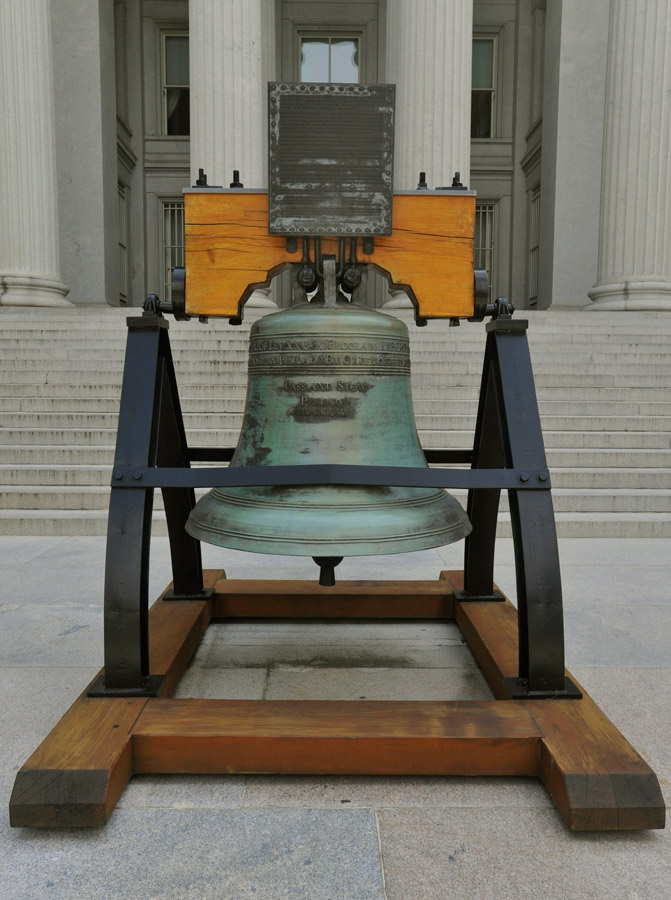
Why does it matter?
Two DC Liberty Bells aren’t really twice as good as one, so what does it matter?
Whether or not the missing Liberty Bell can be found, it can’t be denied that DC residents and millions of visitors are missing out on their chance to see one of our most interesting, if under-appreciated monuments.
Prior to 9/11, the Treasury Bell was accessible to all DC visitors. When I visited in 2007, I learned the street between the White House and Treasury Building had been cordoned off to increase security, cutting off the public’s access to the bell. The photo below was as close as I could get.
In what amounts to just over a ton of irony, our efforts to gain some safety resulted in the loss of the Liberty Bell as an accessible monument.
If you listen to the wind, you can hear the ghost of Ben Franklin slapping his forehead.
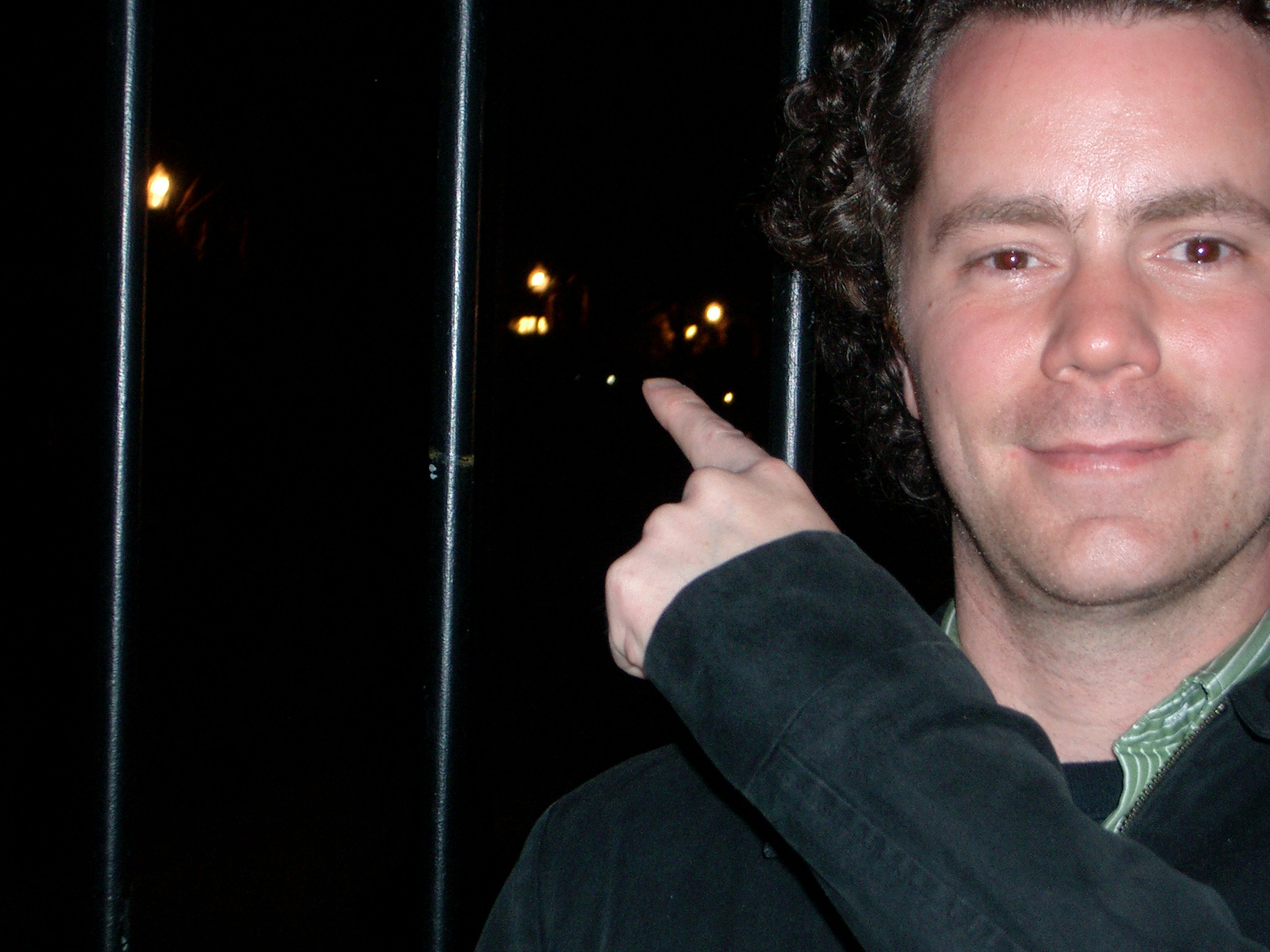
A proposal
The missing bell is likely to stay missing. According to its own plaque, the Treasury bell is part of the 1950 bond drive. By the Treasury’s own declaration, these bells were intended to be displayed in public, non-commercial spaces. Simply put, the Treasury bell has not been fulfilling its intended purpose for the last 17 years.
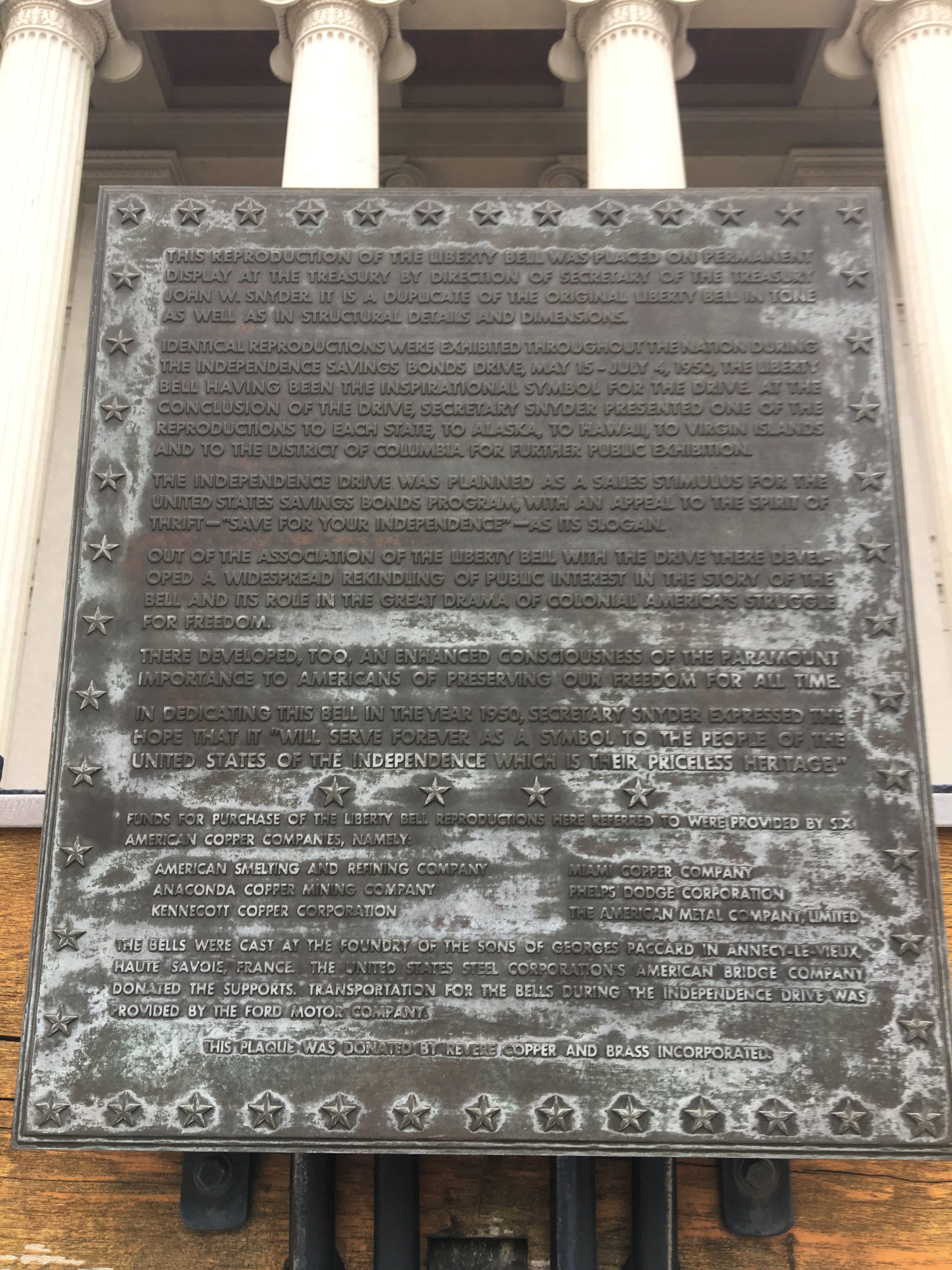
This can be easily remedied: relocate the bell.
It would be counter to the spirit of the 1950 bond drive for the Treasury to incur any cost related to moving the bell — but there is an easy way to fund such a project.
Surely, the Treasury didn’t budget for the much-publicized donations it recently received. What better way to use that surplus and honor the fiscally responsible spirit of the 1950 bond drive than to spend $50-100k to find a permanent home for DC’s only remaining Liberty Bell replica?
Resources:
Thanks to Josh Gibson with the DC Council for his generosity, enthusiasm and incredible photos. Thanks to Allison McNearny at the Daily Beast for discovering the 1950 Treasury report.

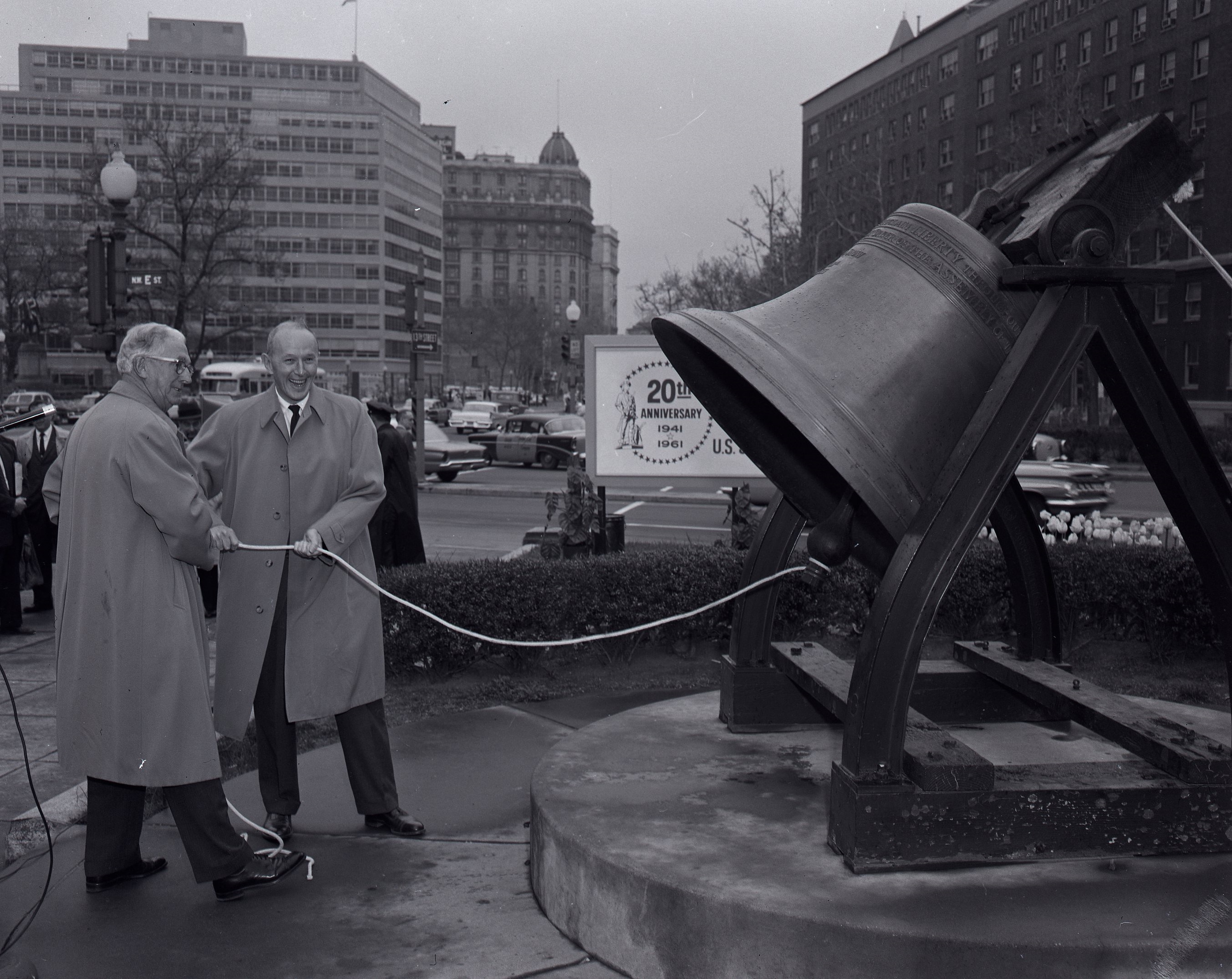
DE has 2 bells as well. I was confused when I first arrived. I have yet (other than the Allentown Bell) witnessed a number. I’ll continue to look. sMiles
Thanks. Where is the second DE bell?
Well, it’s in a fondue restaurant, obviously.
Have you heard of previous replicas being cast? I came across a news article in a local Massachusetts newspaper that claims a church purchased a replica of the Liberty Bell and installed it in 1908.
Kevin, Thanks for the comment. I have not heard of the particular bell you mentioned. If you have any info on it, I’d love to see it. I was not able to find it in a quick newspaper search. I do know of several bells cast before the 1950 replicas. The Justice Bell, used to promote the suffrage movement was cast in 1915 and is now in Valley Forge, PA. Václav, the Democratic Mid-European Union Liberty Bell was cast in 1918, briefly stolen by Hitler and currently resides in a Czech Republic belfry. So many interesting stories.
I would like to connect with you.
I am the founder of the Universal Freedom Alliance, and we are organizing Liberty Bell events across the nation, as a way to symbolically usher in a renaissance for Liberty and Justice for All – aka. Freedom.
We would love to include you in our events, if that feels aligned, to help share some of what you know around all the bells, and beyond.
Best of luck in your quest. I sent you an email with more information. Let me know how else I might be helpful.